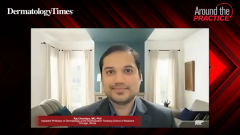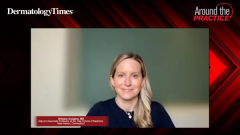
Case 3 Continued: How to Have Conversation About Risk of Biologics and Length of Therapy
Atopic dermatitis specialists discuss how to have a conversation with parents about risks of biologics and how to answer questions about length of therapy.
Episodes in this series

Joshua Zeichner, MD: How do you have the conversation with parents about the short- and long-term risks associated with biologics? How does that impact your decision-making and the shared decision-making to start a younger child, or even an older child, a 12-year-old, on a biologic?
Raj Chovatiya, MD, PhD: The chronicity of the disease is one of the big things that’s oftentimes missing from the discussion. I’d like to put it front and center that this is a chronic disease. It isn’t an acute thing. We’ve seen what it has done in this particular circumstance, but it’s possible that this might be something that changes some time from now. The bottom line is that the reason we want to think about a whole-body option for treatment is to manage this longitudinally while balancing short- and long-term adverse effects, both of which are very favorable in the case of biologic therapy.
There are obviously a couple things you want to mention in the short run generally across age groups. You’re obviously thinking about some of those eye adverse effects, conjunctivitis in particular. Injection site reactions are another one in the early treatment course that generally seem to be persistent across different groups. Obviously, most of the things on that list tend to be less common but are possible, everything from herpes to some of the less common eye adverse effects.
In terms of long-term adverse effects, adults have accumulated the most long-term extension data, but we’re still past a year in terms of what has been out for adolescents and younger patients. I like to emphasize that this has been out for a while and we’ve been studying it for a while. There are data that are continuing to accumulate, not even officially related to a trial but also real-world data that people are publishing. Sometimes I find that people respond really well to talking about how long something has been out there, how much it has been studied, and how much people continue to put out there. That helps to balance that discussion with my patients.
Brittany Craiglow, MD: Every family wants to know, how long does he or she have to be on it? And I always think, if you were diagnosed with hypertension, are you asking your physician, “How long do I have to take metoprolol?”
Raj Chovatiya, MD, PhD: Every time.
Brittany Craiglow, MD: That’s a hard question, especially if you don’t do this a lot, because we don’t know the answer. To address it, I say, “For as long as he or she needs it. We’re probably looking at this for the foreseeable future because this is a chronic disease, but we’re going to re-evaluate.” Nobody likes to hear that this is for forever. For some people, it might be forever. But also in pediatrics, some of these children are going to get better over time. We see that less often in the children who are more severe who we’re treating, but we don’t know. Maybe shutting down this signal for a period of time hits a reset button in the immune system.
I usually say, “We’re going to do this for the next many months. If we come to a point where Johnny’s doing great and you aren’t even having to use topicals in between doses, and we go through a couple seasons like that, then maybe we’ll re-evaluate and think about spacing out injections a little.” Leaving the door open for them is useful. Because the psychology of forever doesn’t feel good to people. It’s helpful to acknowledge that and say, “I feel comfortable with this therapy, and I want your child to be better. If you need it, cool. If there comes a point where you don’t, even better.”
Vikash Oza, MD: It’s important to set the expectation of more than a year, because some people assume it’ll be a couple of months, and there are very few, if any, patients where that’s the scenario in the age groups and indications that we’re treating. Setting that up is important. The last part is one of the most interesting and pressing questions for us as pediatric dermatologists, especially as you’re moving into a younger age group: When could we pull off? How do you pull off? Over what period of time? For a lot of inflammatory conditions, I want to see good disease control for 6 months or a year before I’m even contemplating that, but that’s just a gestalt and not based on any empirical data.
Transcript edited for clarity
Newsletter
Like what you’re reading? Subscribe to Dermatology Times for weekly updates on therapies, innovations, and real-world practice tips.
























